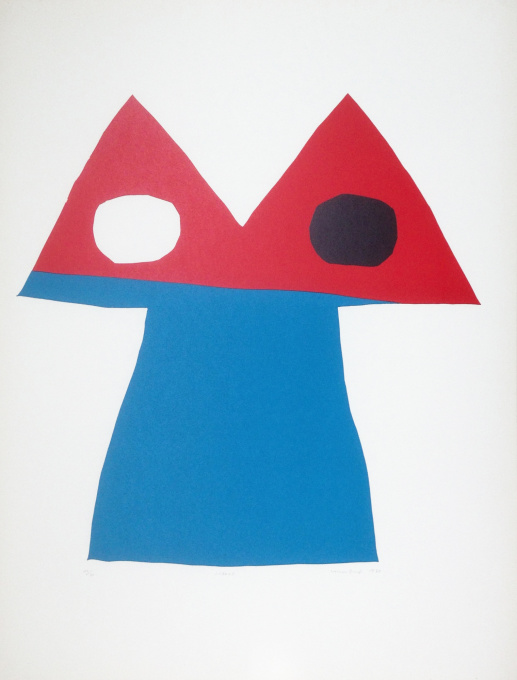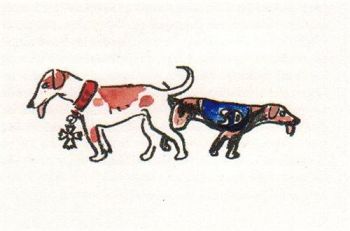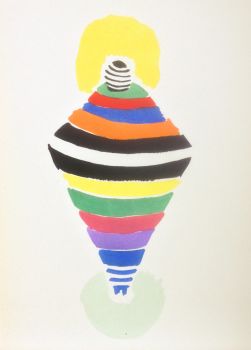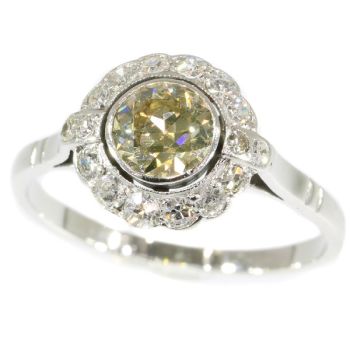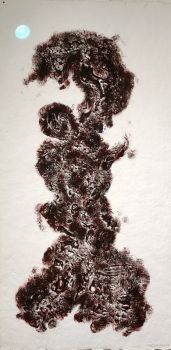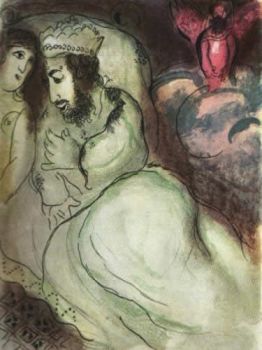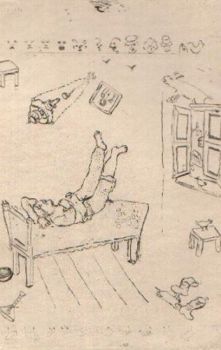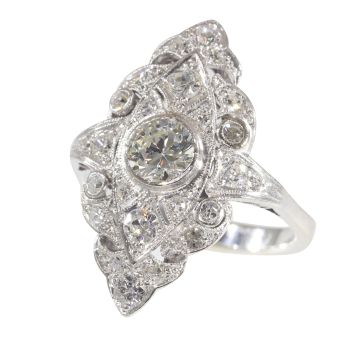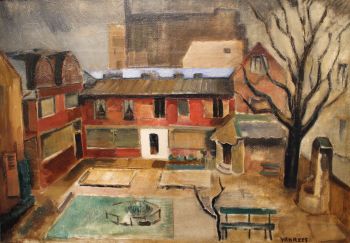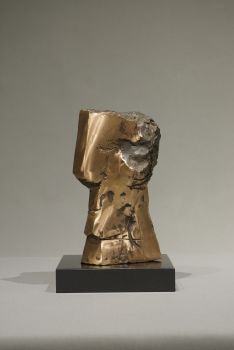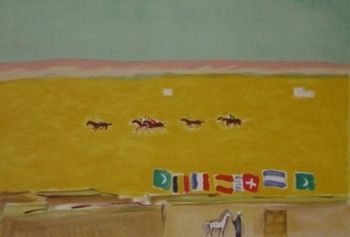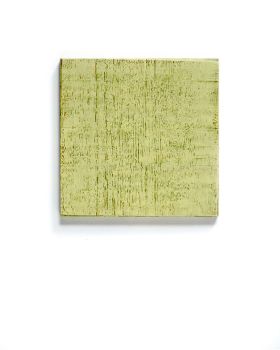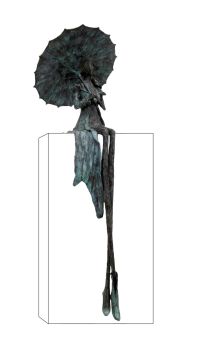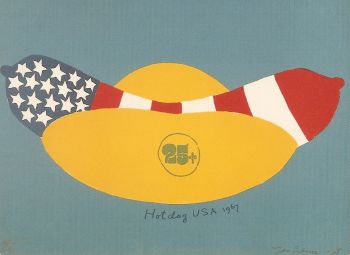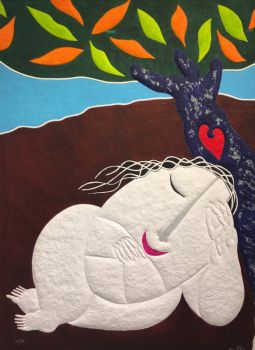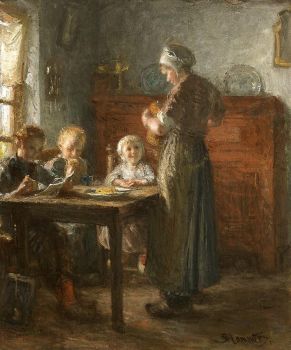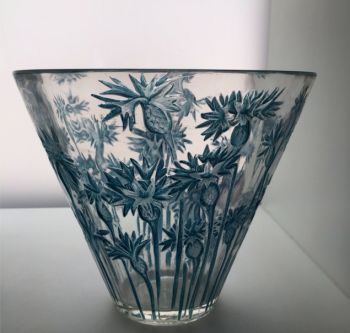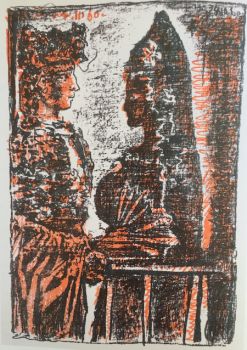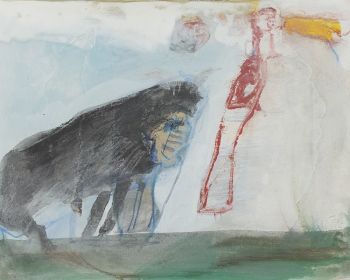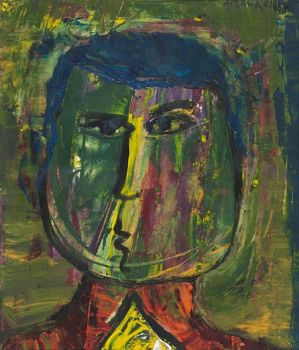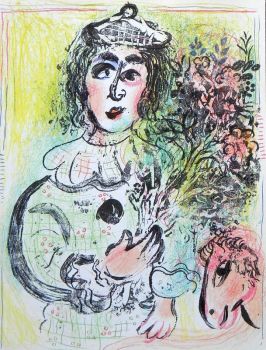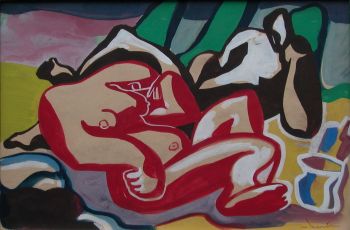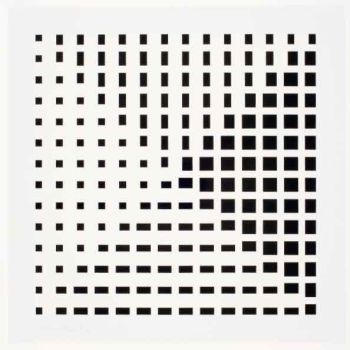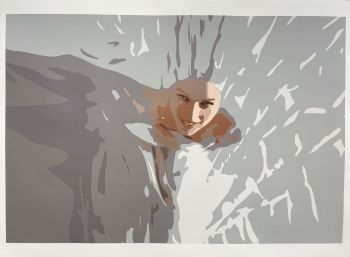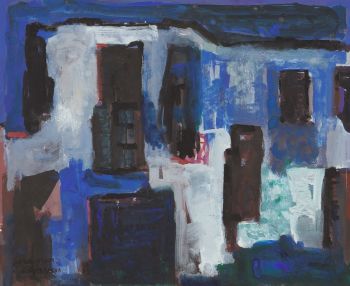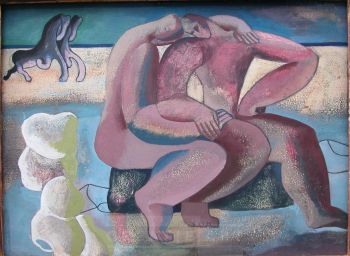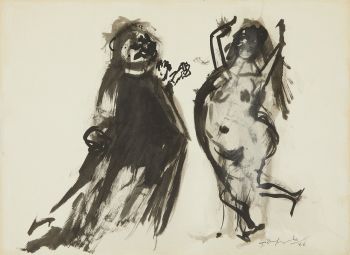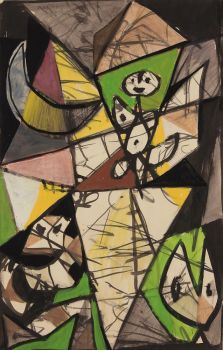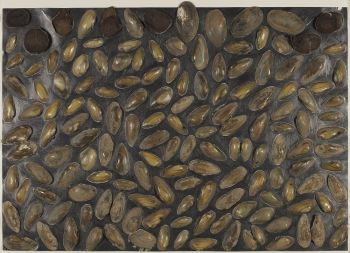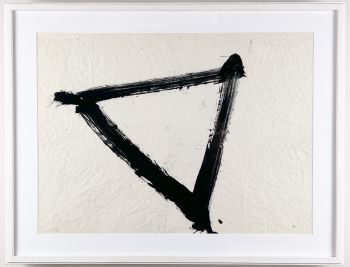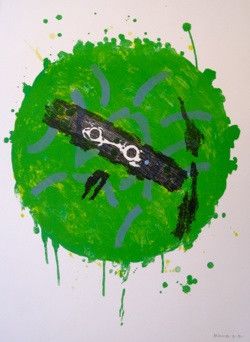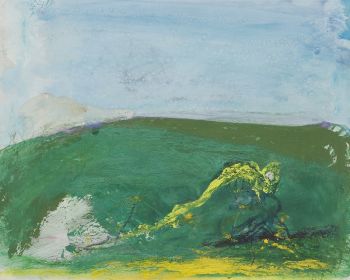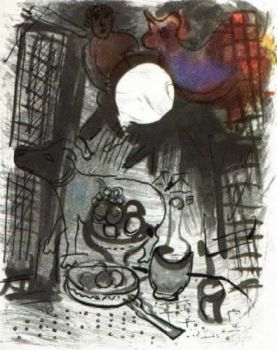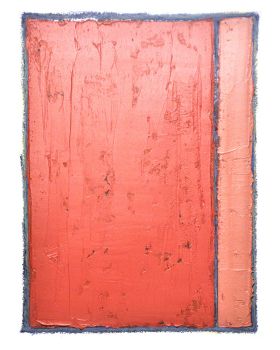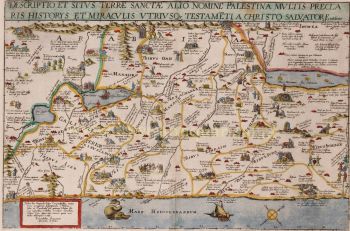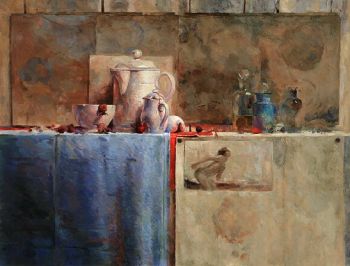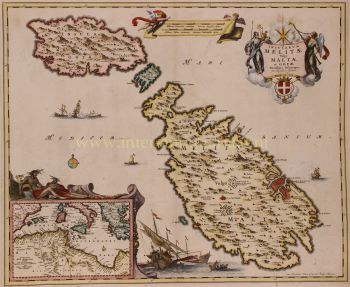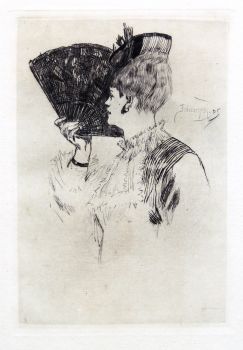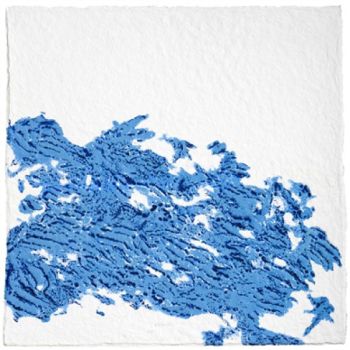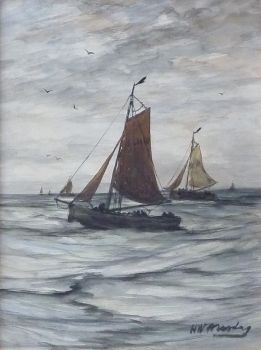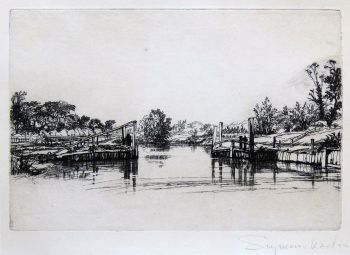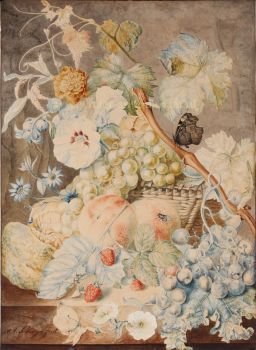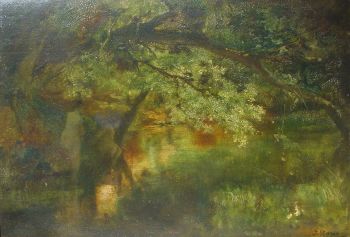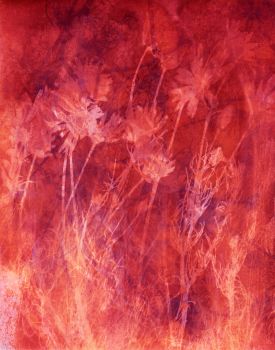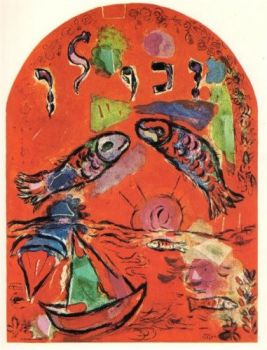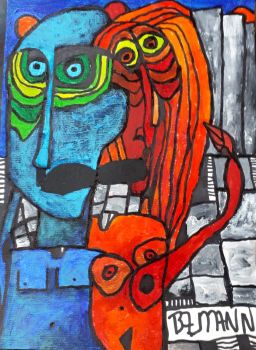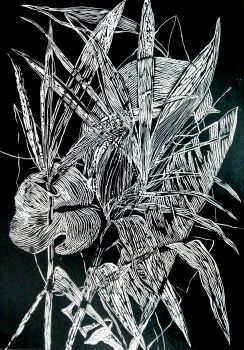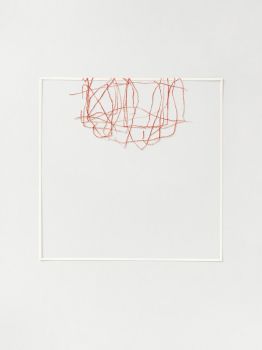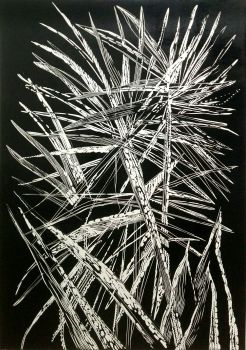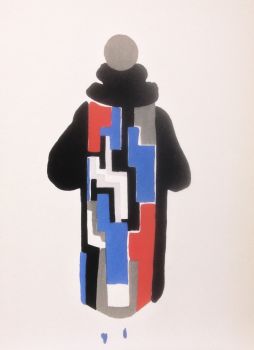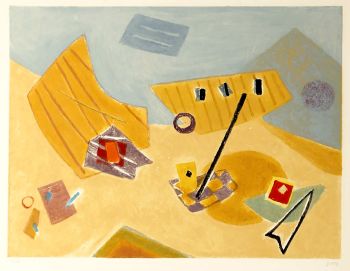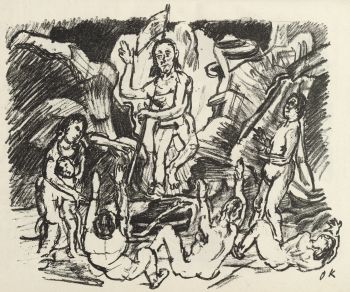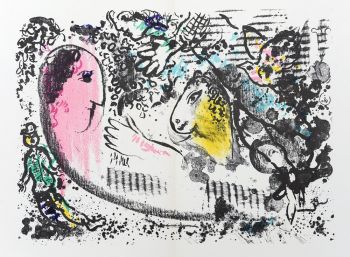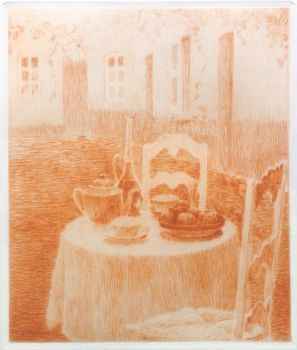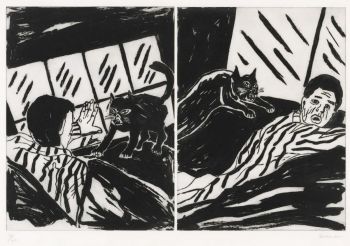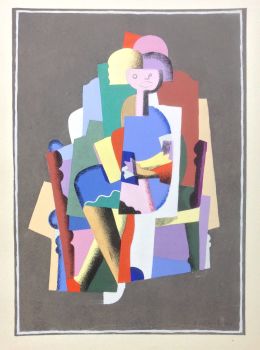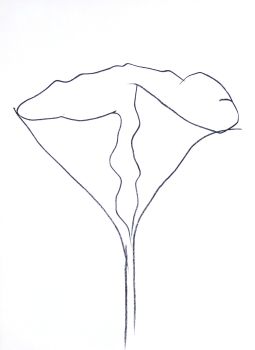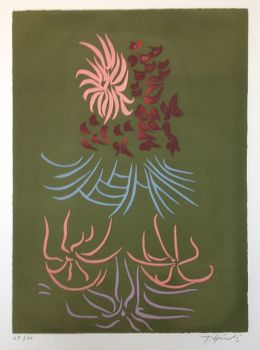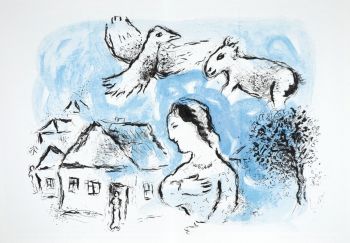Libons 1970
Werner Graeff
EncrerPapier
65 ⨯ 50 cm
ConditionMint
Prix sur demande
Hans den Hollander Prints
- Sur l'oeuvre d'artmedium: linocut
edition size: 30 (13/30)
signature: lower right in pencil
Werner Graeff, born 24 August 1901 in Sonnborn, was a German sculptor, painter, graphic artist, photographer and inventor. Graeff graduated from high school in Berlin-Tegel. His first pictures were taken in an Impressionist style. Around 1919 he turned to Cubist forms. This style also influenced his early sculptures. From 1921 he was a student at the Bauhaus in Weimar. That same year he joined the De Stijl group and was from 1922 employees of the same journal.
He took a course at Stijl, Theo van Doesburg. Also in 1922 he participated in the "First International Congress Advanced Artist" of 29 to 31 May in Dusseldorf. Graeff was 1924 with Hans Richter and Piet Mondriaan, the Journal of Basic Design (abbreviated G). His first book was published in 1927 by Willi Baumeister. In the winter semester 1924/1925 Graeff began studying at the Technische Hochschule in Berlin-Charlottenburg, which he abandoned it for economic reasons. In the following years he turned more to writing, his artistic ambitions resigned. Mies van der Rohe in 1928 made him the chief propagandist of the exhibition The apartment in the Weißenhofsiedlung in Stuttgart.
He has published on behalf of the German Werkbund exhibition at the volumes of construction and housing and interiors. 1931/1932 was Graeff teacher of photography at the Reimann School in Berlin.
In 1936 he emigrated to Spain. The years of war and immediate postwar period Graeff lived as a teacher and a writer in Switzerland. From 1946 he developed there one of the first mini cameras in the world.
From 1950, he returned to painting. He was from 1951 to 1958 taught at the Folkwang School in Essen.
Graeff died unexpectedly on 29 August 1978 in Blacksburg, Virginia, USA.
The second by his wife Ursula Graeff deer managed estate of the artist in 2009 was bequeathed to the Museum Wiesbaden. - Sur l'artisteWerner Graeff, né le 24 août 1901 à Sonnborn, est un sculpteur, peintre, graphiste, photographe et inventeur allemand. Graeff est diplômé du lycée de Berlin-Tegel. Ses premières photos sont prises dans un style impressionniste. Vers 1919, il se tourne vers les formes cubistes. Ce style a également influencé ses premières sculptures. À partir de 1921, il étudie au Bauhaus de Weimar. La même année, il rejoint le groupe De Stijl et est, à partir de 1922, collaborateur de la même revue. Il suit un cours chez Stijl, Theo van Doesburg. Toujours en 1922, il participe au "Premier congrès international des artistes avancés" du 29 au 31 mai à Dusseldorf. Graeff a été 1924 avec Hans Richter et Piet Mondriaan, le Journal of Basic Design (abrégé G). Son premier livre est publié en 1927 par Willi Baumeister. Au semestre d'hiver 1924/1925, Graeff commence à étudier à la Technische Hochschule de Berlin-Charlottenburg, qu'il abandonne pour des raisons économiques. Dans les années suivantes, il se tourne davantage vers l'écriture, ses ambitions artistiques se résignent. En 1928, Mies van der Rohe fait de lui le principal propagandiste de l'exposition L'appartement de la Weißenhofsiedlung à Stuttgart. Il a publié au nom de l'exposition du Werkbund allemand aux volumes de la construction et du logement et des intérieurs. 1931/1932 Graeff était professeur de photographie à l'école Reimann de Berlin. En 1936, il émigre en Espagne. Pendant les années de guerre et l'immédiat après-guerre, Graeff vit en Suisse en tant que professeur et écrivain. À partir de 1946, il y développe l'un des premiers mini-appareils photo au monde. À partir de 1950, il revient à la peinture. De 1951 à 1958, il a enseigné à l'école Folkwang d'Essen. Graeff est décédé de façon inattendue le 29 août 1978 à Blacksburg, en Virginie, aux États-Unis.
Êtes-vous intéressé par l'achat de cette oeuvre?
Artwork details
Catégorie
Style
Matériel & technique
Couleur
Related artworks
Otto van Rees
Het atelier van de kunstenaar in Parijs (1918)1918
Prix sur demandeKunsthandel Pygmalion
René Lalique
Un ancien vase 'Bluets' conçu par René Lalique (1860-1945)1910 - 1920
Prix sur demandeLennart Booij Fine Art and Rare Items
1 - 4 / 24- 1 - 4 / 24
- 1 - 4 / 24
- 1 - 4 / 12

